Views: 636
Tour № 1 – Šventaragis Valley
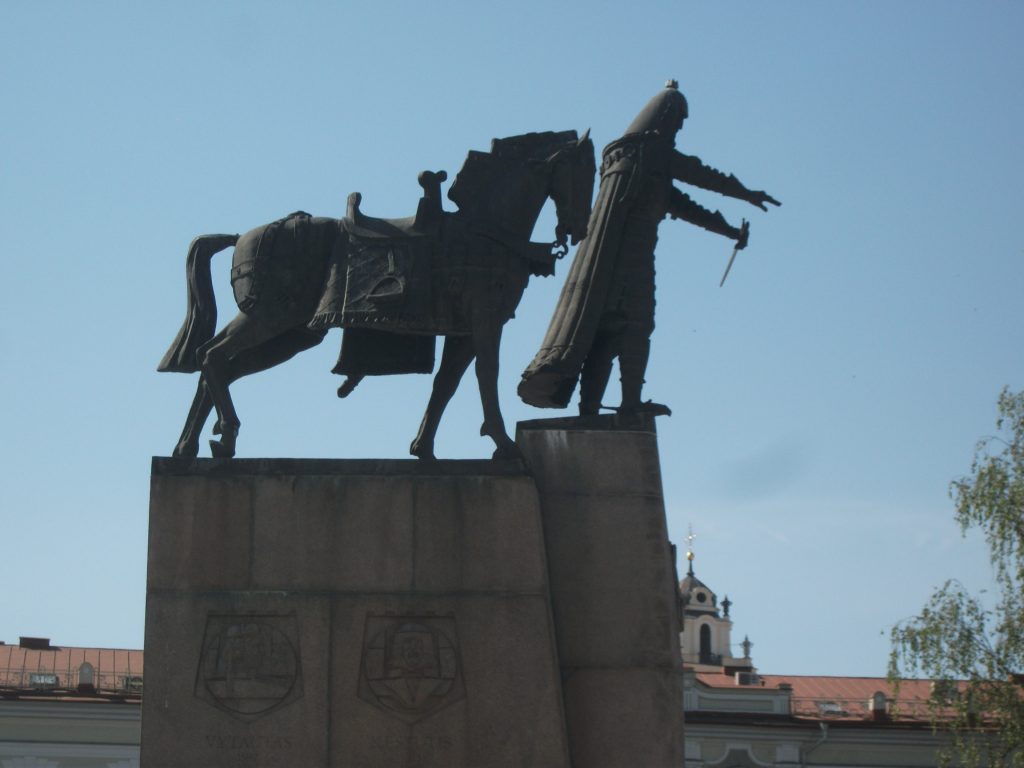
- Cathedral Basilica of St. Stanislaus & St. Vladislaus
- Cathedral Basilica of St. Stanislaus & St. Vladislaus (inside, including the Chapel of St. Casimir, the Chapel of Deportees, the Gasztołd Chapel, the Royal Chapel, St. Wladislaw/Vladislaus/Ladislav Chapel, High alter, Memorial plague to the Grand Duke of Lithuania Vytautas Magnus, the Sapieha Madona’s picture, etc)
- Cathedral Basilica Bell Tower
- Royal Palace of Lithuania (the Palace of Grand Dukes of the Grand Duchy of Lithuania)
- Upper Castle
- Upper Castle’s West (Gediminas) Tower
- Old Arsenal – Museum of Applied Art
- New Arsenal – Lithuanian National Museum
- Monument to King Mindaugas (1236-1263: Crowned King on July 6th, 1253)
- Monument to Lithuanian Grand Duke Gediminas (1316-1341: the founder of Gediminian-Jagiellonian ruling dynasty)
Tour № 2 – Vilnius University & Monastery Quarter
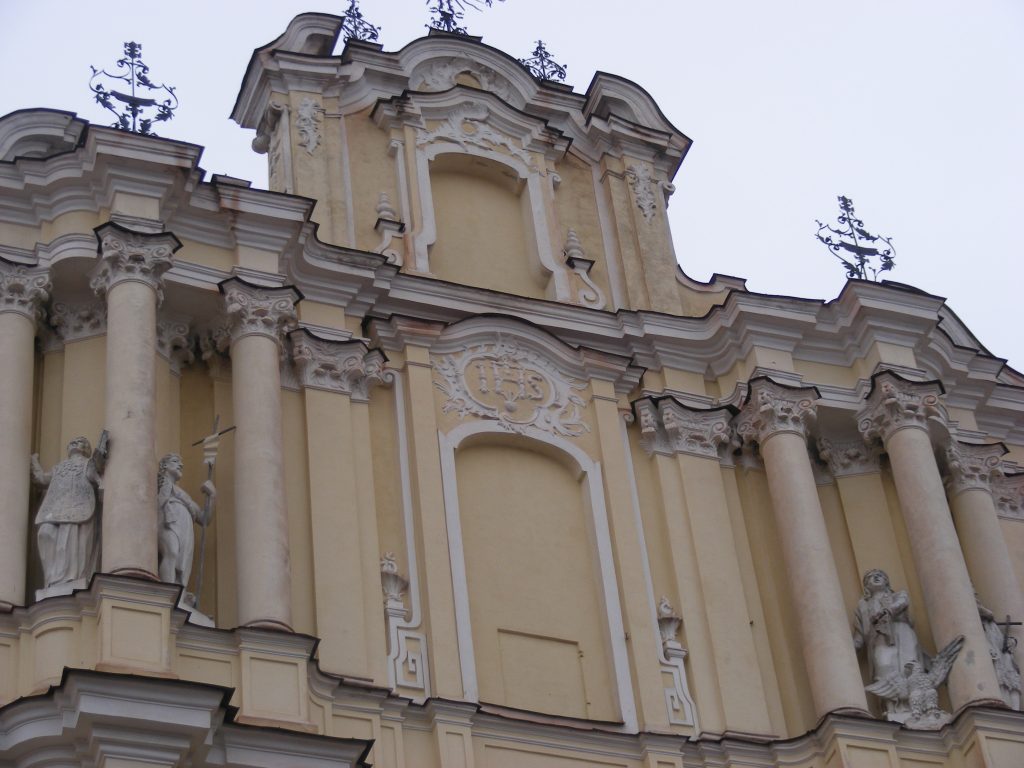
- Vilnius University – Historical Campus (est. 1579)
- Vilnius University – the Bronze door of the Central Library
- Vilnius University – Historical Campus (inside, including 12 university’s courtyards, Domus Philologiae, Smuglevičius Hall, White (Observatory) Hall, Lelewel Hall, Lithuanian Philology Centre, etc)
- Vilnius University – Science Museum
- St. Johns’ Church in the Great (Skarga) university’s Courtyard
- St. Johns’ Church in the Great (Skarga) university’s Courtyard (inside, including Great alter, Altar of Maria of Loretto, Chapel of St. Anne, Altar of St. Victorino, Organ, several memorial plagues and frescos, etc)
- St. Johns’ Church in the Great (Skarga) university’s Courtyard – Bell Tower
- Dominican Street
- University Street
- St. John Street
- Church of the Holy Cross and former Hospitaller Monastery
- Monument to Laurinas Gucevičius (1753-1798)
- Presidential Palace (Prezidentura)
- Alumni (Alumnatas) Courtyard
- Sanctuary of Divine Mercy
- Church of the Holy Spirit and former Dominican Monastery
- St. Ignatius Church and former Jesuit novitiate
- Plaque for Righteous Among the Nations
- Monument to Stanislaw Moniuszko (1819-1872)
- St. Catherine’s Church and former Benedictine Monastery
Tour № 3 – From the Cathedral Basilica to Town Hall Square
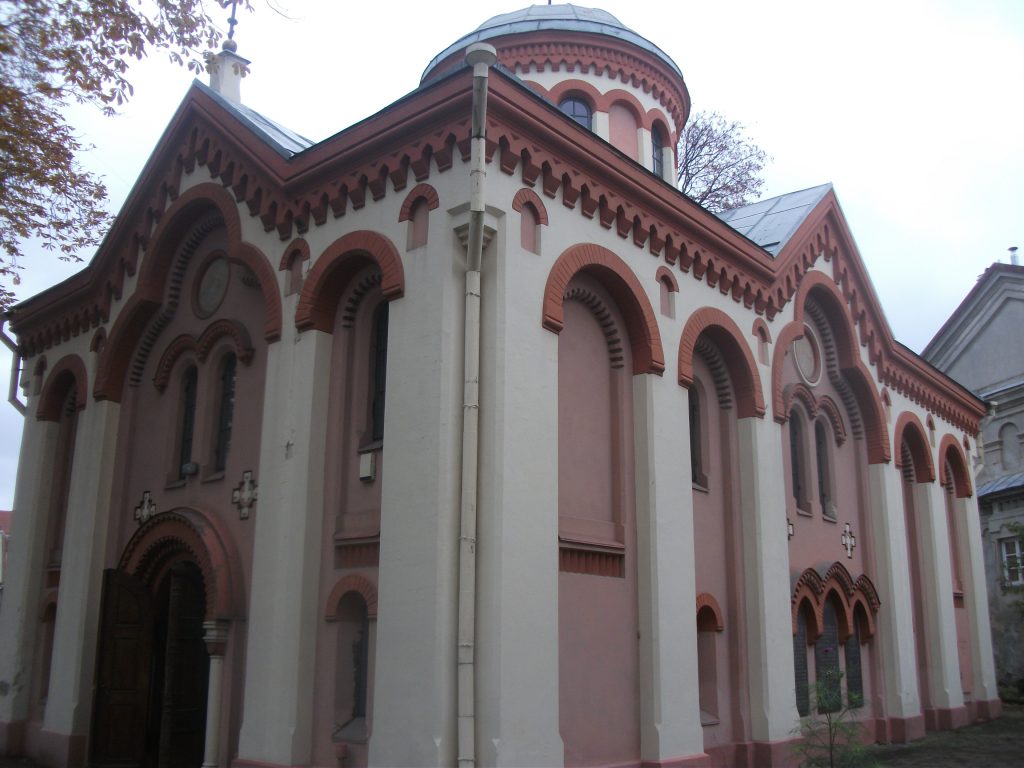
- Buildings of Pilies Street
- House of the Signatories
- Marija and Jurgis Šlapelis House Museum
- Paraskeva Russian Orthodox Church
- Pilies Street souvenir open market – What should you buy in Vilnius
- Buildings of Didžioji (Great) Street
- Vilnius Picture Gallery (Chodkiewicz Palace)
- Stendhal House
- Nicholas Russian Orthodox Church
- Historical Town Hall
- Buildings around the Square of Historical Town Hall
- Former printing house of Francysk Skaryna (1486-1551) – the Magistrate House
- Buildings of Savičiaus Street
- Mikalojus Konstantinas Čiurlionis’ (1875-1911) Memorial Flat Museum
- Church of Blessed Mary the Comforter and the Augustine Monastery
- Kazys Varnelis’ (1917-2010) House Museum – Great and Small Guilds
- Casimir Church
- Buildings of Subačius Street
- Bastion – an artillery fortification
- Church of the Assumption and former Missionary Monastery
Tour № 4 – Quarter of Three Confessions
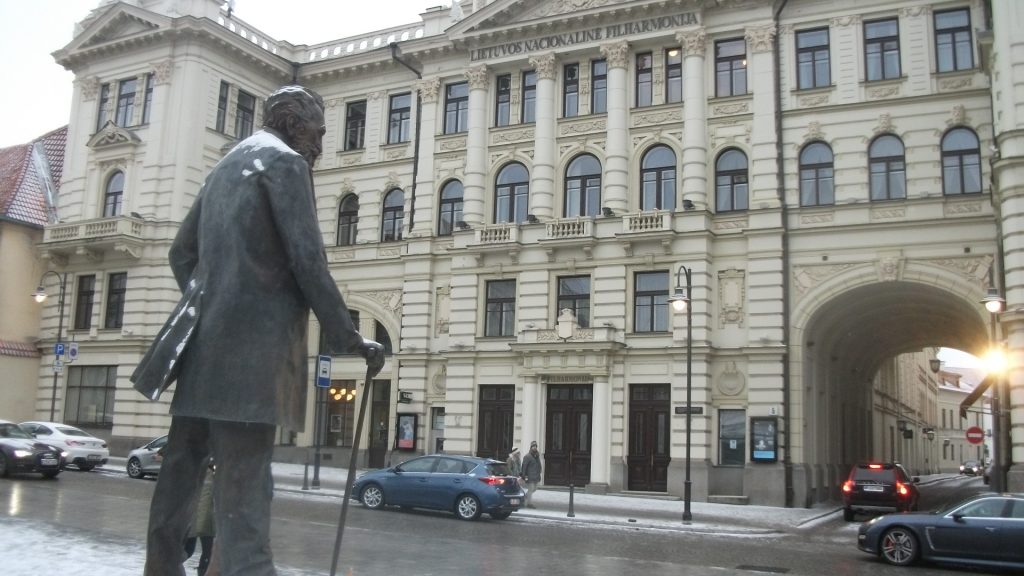
- Buildings of Aušros Street
- Radisson SAS Astorijos Hotel (former Italia hotel)
- Building of National Philharmonic
- Monument to Jonas Basanavičius (1851-1927) on the square in front of National Philharmonic
- Memorial plaque to Ignacy Domeyko (1802-1889)
- Baroque gate to Uniate Church of the Holy Trinity and former Basilian Monastery
- Uniate Church of the Holy Trinity and former Basilian Monastery
- Memorial plaque to Josaphat Kuncevic (St. Josaphat, 1580-1623)
- Memorial plaque on the building of former Basilian Monastery where Adam Mickiewicz (1798-1855) was imprisoned
- Russian Orthodox Church of the Holy Spirit and monastery
- Russian Orthodox Church of the Holy Spirit (inside, including the remains of the Three Vilnius Martyrs kept under a wooden canopy in front of the iconostasis)
- Church of St. Teresa (of Ávila, Spain) and former Carmelite Monastery
- Church of St. Teresa (of Ávila, Spain) (inside, including the church’s mural paintings, the Chapel of Pac’s family’s mausoleum, impressive, gently-curved church’s pulpit and the altar)
- Chapel of the Gate of Dawn (Medininkų Gate)
- The sacred picture of the Holy Virgin Mary in the Chapel of the Gate of Dawn (Medininkų Gate)
- Votive objects in the Chapel of the Gate of Dawn (Medininkų Gate)
- The Gate of Dawn (Medininkų Gate) from the southern side with a Renaissance composition of Vytis
Tour № 5 – Jewish Quarter
- Small and Large Vilnius Jewish Ghettos
- Monument to the Vilna Gaon
- Mark Antokolski (1840-1902) House
- Former Mattityahu Strashun (1817-1885) Jewish Library
- Vokiečių gatvė (German Street)
- Contemporary Art Centre
- „Barbara“ sculpture
- Monument in remembrance of Vilnius Ghetto martyrs and fighters in 1941-1943
- Church of St. Nicholas
- A sculpture of Vilnius Patron Saint Christopher in the yard of the Church of St. Nicholas
- Evangelical Lutheran Church
- Amatų gildija (Artisan guild) open ceramic workshop and gallery
- Former Vilnius ghetto theatre 1941-1943
- Former Gothic façade at Karmelitų gatvę (Carmelite Street)
- Closed courtyards with open galleries, characteristic of Old Town architecture
- Church of All Saints and former Carmelite Monastery
- A section of Vilnius historical defensive wall
- The sculpture named „Egg“
- Monument to Tzemach Shabad (1864-1935)
- Choral Synagogue
- Church of the Assumption of the Holy Virgin Mary and former Franciscan Monastery
- Sculpture of the Holy Virgin Mary (The White Mother of God)
- Suzin’s built Baroque-style family mausoleum chapel
- A monument to Jozef Montwiłł (1850-1911)
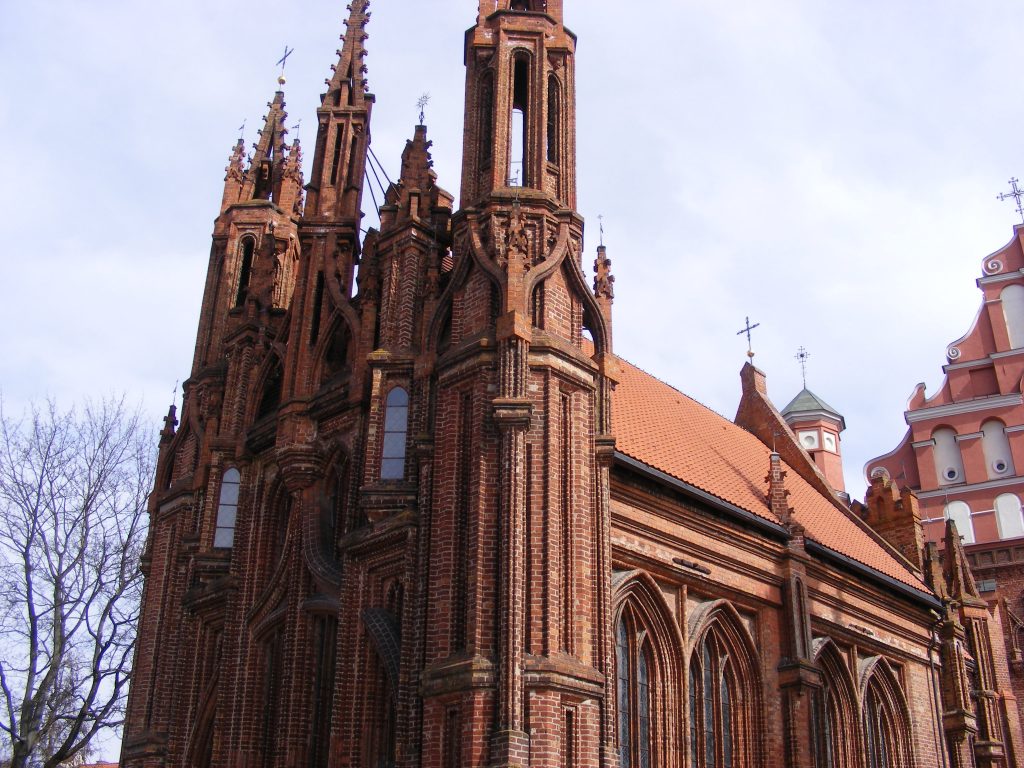
Tour № 6 – Bends of the River Vilnia
- Adam Mickiewicz’s Memorial Flat Museum
- Church of St. Anne
- Church of St. Francis and St. Bernardine
- Chapel of the Holy Steps
- Monument to Adam Mickiewicz
- Church of St. Michael the Archangel
- Adam Mickiewitz’s House
- Sereikiškių Park
- Amber Museum
- Russian Orthodox Church of the Blessed Mother of God
- „Angel of Užupis“ sculpture
- Constitution of the „Republic of Užupis“
- Church of St. Bartholomew
- Bernardinų Cemetery
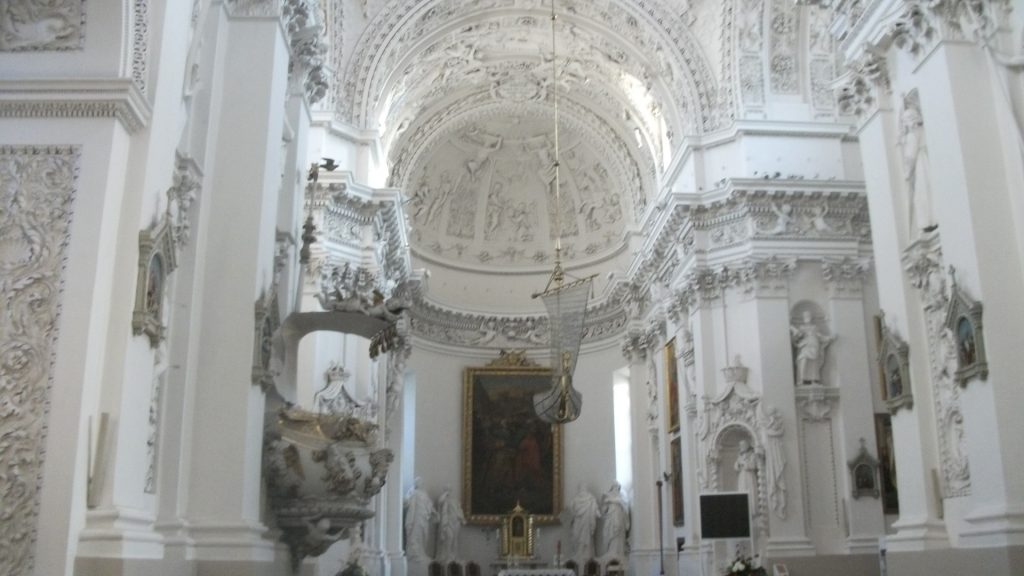
Tour № 7 – City Centre
- Three Crosses Monument on the Three Crosses Hill
- Church of St. Peter and St. Paul
- Petras Vileišis Estate
- Tuskulėnų Park with columbarium
- A building of Lithuanian Energy
- A building of Lithuanian Theatre, Music and Film (A Small Radziwiłł Palace)
- A Great Radziwiłł Palace
- Vilna Gaon Jewish State Museum
- Sculpture or Roman Gary
- A monument to Frank Zappa
- Museum of Genocide Victims (former KGB Headquarters)
- A plaque to Chiune Sugihara
All photos are copyrighted by Vladislav B. Sotirovic
© Vladislav B. Sotirovic 2018

RELATED POSTS
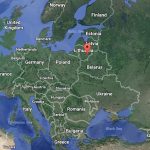
A geographical centre of Europe - 25 km far from Vilnius. From 2015 Summer You will get a special Certificate that you have visited the Geographical center of Europe. Don't miss the chance to get it for freeThe Baltic States of Europe - Estonia, Latvia & LithuaniaVytis (The Knight) - The Coat of Arm of both historical Grand Duchy of Lithuania and present-day the Republic of LithuaniaOrigins of images: Facebook, Twitter, Wikimedia, Wikipedia, Flickr, Google, Imageinjection & Pinterest.Read our Disclaimer/Legal Statement!Donate to Support UsWe would like to ask you to consider a small donation to help our team keep working.
Continue Reading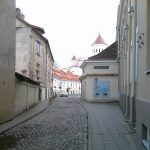
The Grand Duke of Lithuania Sigismund (1432-1440), who ruled briefly after the death of his brother Vytautas the Great (died in 1430), granted equal rights to the Russian Orthodox believers living in the capital-city of Vilnius - before long they came to constitute one half of the members of the city board and guild elders In the Middle Ages Vilnius (today Old Town) was increasingly multy-national as it was the case with the Grand Duchy of Lithuania as well. The city was, in fact, divided into four quarters according to the ethnic and religious belonging of its citizens: the German Quarter, the Russian Quarter, the Jewish Quarter, and the Tartar Quarter. Each of these city quarters had the main street named according to the ethnic belonging of their inhabitantsThe Russian Street in Old Town of Vilnius ends with the Russian Orthodox Cathedral (Sobor) of the Dormition of the Holy Mother ...
Continue Reading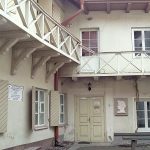
In this house, belonging at the time to a university professor, Adam Mickiewicz stayed for a short period in 1822 and completed the poem "Gražina"It is small museum of three rooms but it is currently being expended. Among the exhibits are several portraits of Adam Mickiewicz and some period furniture, including a table and chair from Kaunas and a chair from Paris that the poet himself usedThe exhibition includes among the many volumes of his work in foreign languages, for instance, a Persian translation of his "Sonnets from the Crimea" All photos are copyrighted by Vladislav B. Sotirovic© Vladislav B. Sotirovic 2020
Continue Reading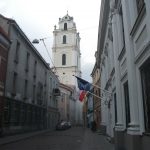
In this street, it was used to be a market place where it meets Pilies street. The first Town Hall is also believed to have stood on this spot Pharmacy house in St. John St. No. 5. Georg Schulz's pharmacy operated in this house since 1639. During the war in 1655, the house was burned down. In 1781, pharmacist Koszyk acquired the ruined building and reconstructed it The Pac estate. Since 1628, the building belonged to the Pac magnate family of the Grand Duchy of Lithuania. In 1783, the dilapidated building was bought, renovated and decorated by the Chancellor of the Grand Duchy of Lithuania - Alexander Michael Sapieha. Currently, the building belongs to the Polish Embassy All photos are copyrighted by Vladislav B. Sotirovic© Vladislav B. Sotirovic 2020
Continue Reading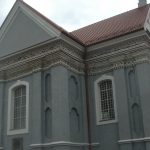
St. Lazarus' almshouse operated in this church, plague and famine victims were buried there. In 1715, the church and the monastery were given to the brethren of St. Rochus who tended to sick people, and in 1752 - to the sisters of MaryIn a cemetery at the church many outstanding people were buried, among others architect Laurynas Stuoka-Gucevičius. A memorial plaque to him is set up on the south façade of the church. However, later the cemetery was turned into a storage site of construction materialsThe church was severely damaged during a fire in 1794. The church was reconstructed and slightly transformed in 1801-1806. In 1864, the convent was closed down, and the buildings converted into a prisonAll photos are copyrighted by Vladislav B. Sotirovic© Vladislav B. Sotirovic 2020
Continue Reading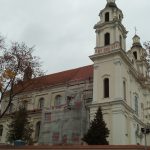
The church is an elegant late Baroque monument built-in 1702-1730. It is made even more attractive by an asymmetrical monastery ensemble in 1713-1730The towers date from the mid-18th century. They end in rococo domes with lanterns Both the church and the monastery belonged to the Jesuit Order. The monastery was intended for the Jesuit monks with 10 years of service experience seeking to become professed Jesiuts, i.e., to make the last ceremonial vowes All photos are copyrighted by Vladislav B. Sotirovic© Vladislav B. Sotirovic 2019
Continue Reading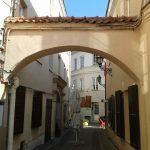
A building of Jewish Center of Culture and Information in the area of the Large Jewish Ghetto in 1941-1943. In this house a famous Vilnius resident Dr. Tzemach Shabad livedTzemach Shabad (1864-1935) was not only a good doctor, but a societal and community figure, and humanist as well. A monument (in 2007 erected) to him on the territory of WWII Large Jewish GhettoA plaque of a plan of the Jewish Ghetto in 1941-1943. There were Small and Large Jewish Ghettos existing from September 6th, 1941 to September 23rd, 1943. Today, September 23rd is the National Memorial Day for the Holocaust/Genocide of the Lithuanian Jews All photos are copyrighted by Vladislav B. Sotirovic© Vladislav B. Sotirovic 2019
Continue Reading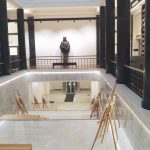
One of the meeting rooms in the library for public lectures, book presentations and discussionsOne of the exibition hallsOne of the Reading RoomsAll photos are copyrighted by Vladislav B. Sotirovic© Vladislav B. Sotirovic 2020
Continue Reading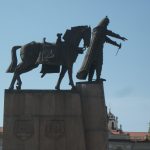
Grand Duke Gediminas is considered as the founder of the city of Vilnius. The monument is located in front of the Royal Palace and Cathedral Basilica in the very downtown of VilniusGediminas was a diplomatic politician, creating ties with the Roman Pope and other European rulers. He created favourable conditions for merchants and guildsmen to come to the city. Gediminas was a Grand Duke of the Grand Duchy of Lithuania from 1316 to 1341During the time of Gediminas, people of different ethnicities and confessions began to live in Vilnius. He is the founder of the Gediminian-Jagelonian ruling dynasty of Lithuania and later of Poland as well (till 1572)All photos are copyrighted by Vladislav B. Sotirovic© Vladislav B. Sotirovic 2018
Continue Reading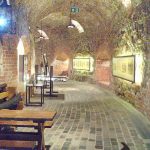
A semi-circular corridor of the Bastion of Vilnius, where cannons were lined up at embrasures, was called a casemate. A special platform with a parapet for heavy artillery was built on the terrace of the bastionA 48-m long, 2,8-m wide and 3,5 m high impressive tunnel leads from the tower to the underground casemate. Cannons brought to the tower would be rolled down this tunnelThe main part of the Bastion of Vilnius is the casemate. It is an underground horseshoe-shaped room for cannons. The casemate forms a semicircle around a 3-4 metre-high hill heightened with sand. From the outside the façade is 8 m high, and sloping, and is built from bricksAll photos are copyrighted by Vladislav B. Sotirovic© Vladislav B. Sotirovic 2020
Continue Reading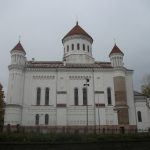
The church is endowed by Juliana, the wife of Lithuania's Grand Duke Algirdas (1345-1377) and mother of Lithuania's and Poland's ruler Jogaila. Grand Duke of Lithuania Jogaila baptized Lithuania in 1387. She was buried in the churchFragments of Gothic masonry have survived in the bottom part and in some segments up to the top. The present façades and the cupola imitate Georgian medieval architectureIn 1415 the church was transformed into a cathedral. In 1511-1522 it was reconstructed by Prince Constantine Ostrogsky. In 1516 Helen (a Russian Orthodox), wife of Alexander Jagiellon (Polish King and Lithuanian Grand Duke) was buried there. In 1609 the cathedral was given to the Uniates (Greek Catholics). In 1865-1868 it rendered its present appearance, and it began to function as a church again All photos are copyrighted by Vladislav B. Sotirovic© Vladislav B. Sotirovic 2018
Continue Reading
The organ, made by famous German master Adam G. Casparini in 1776, is one of the most valuable cultural monuments of Lithuania. The organ itself is the only surviving original 18th-century instrument in LithuaniaThe church has many Baroque frescoes. In the cupola, there is a multi-figural composition "Apotheosis of the Holy Spirit" (neo-Baroque, 19th century)The altars and the pulpit are lavishly decorated with round and relief sculptures and ornamentation All photos are copyrighted by Vladislav B. Sotirovic© Vladislav B. Sotirovic 2018
Continue Reading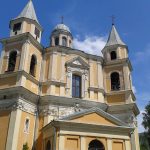
The interior sculptural décor was created by Pietro Perti (Italian master) in 1700-1705. Twin towers were built on in the 18th century. It was built by the efforts of Casimir Sapieha the Younger (1637-1720) in 1694-1717 On the façade frieze two Christian soldiers taken into captivity by the Muslims are represented. The main goal of the Trinitarian Order was returning such captives to their homelands The church has an impressive cupola (dome), the interior is adorned with stucco relief works and sculptures - a large part of them is survived. The church is a "sister" to the Church of St. Peter and St Paul in Vilnius (Antakalnis)All photos are copyrighted by Vladislav B. Sotirovic© Vladislav B. Sotirovic 2019
Continue Reading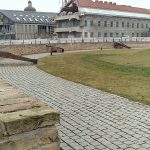
The architect of the Vilnius Bastion is unknown. The building that rose in the early 17th century is attributed to the period of late Renaissance and in that period Vilnius did not have a municipal architectThe wars of the mid-17th century and the 18th century weakened the military power of the Grand Duchy of Lithuania. The army led by the Russian Emperor Aleksey Mikhailovich approached Vilnius in August 1655 and seized the cityWhen Vilnius was liberated in 1660, the city's defensive fortifications needed repair. However, there was not enough funds and the citizens were unable to maintain defensive fortifications, supply them with arms and gunpowder and provide securityAll photos are copyrighted by Vladislav B. Sotirovic© Vladislav B. Sotirovic 2020
Continue Reading
One of Baroque gates of the Sapieha ParkAmong the surviving details of the palace are Baroque façades with stucco relief works by Pietro Perti and three Baroque gates. The park is the only one in Vilnius Vilnius with features of a regular Baroque park The palace and the gates were decorated with sculptures and frescoes created by masters who had worked in the Church of St. Peter and St. Paul and St. Casimir's Chapel of the Cathedral Basilica in VilniusAll photos are copyrighted by Vladislav B. Sotirovic© Vladislav B. Sotirovic 2019
Continue Reading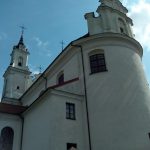
In 1695 the Trinitarians set up a community on the right bank of the River Neris just to the north of Vilnius. Therefore, the place is known as Trinapolis (a city of the Trinitarians)In 1750-1760 Trinapolis was reconstructed in the late Baroque style. It was a summer residence of Vilnius bishopsIn Soviet times the church was closed down. Today, the monastery is used as a retreat house by an order of nuns, and the church is not regularly openAll photos are copyrighted by Vladislav B. Sotirovic© Vladislav B. Sotirovic 2022
Continue Reading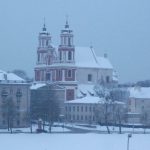
The present church was built in the late 17th century, after its predecessor was burnt down in the 1655 during the war with Russia. The church was completed only in the middle of the 18th century The nave is 24 metres high, making it the tallest in Vilnius; and its length is the same, with accounts for its concentrated appearance when viewed from the sideIn the north tower is a particularly ornate chapel, dedicated to the Dominican St. Hyacinth, with frescoes depicting scenes from his life. The fresco above the entrance depicts the Virgin Mary and Angels. The church was returned to the Dominicans in 1993All photos are copyrighted by Vladislav B. Sotirovic© Vladislav B. Sotirovic 2018
Continue Reading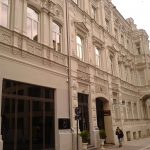
The building in Vilnius Street in Vilnius No. 25 in which Jonas Basanavičius died in hospital on February 16th, 1927. The day of his death coincided with the anniversary of the Independence Act in 1918A memorial plaque on the building informs that in this building in 1909 the Editorial Board of the oldest Lithuanian newspaper "Lithuanian News" started to work Another memorial plague on the building as this building housed a music school, where the famous violinist Jascha Heifetz studied in 1905-1909 All photos are copyrighted by Vladislav B. Sotirovic© Vladislav B. Sotirovic 2022
Continue Reading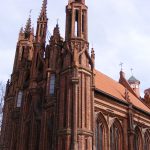
Church of St. Anne (left) and Bernardine Church (right). The church of St. Anne is a unique monument of red firebrick Gothic architecture in LithuaniaSt. Anne Church, designed in 1495-1500 by Benedikt Rejt, built up at the turn of the 15th century, and renovated in 1902-1909. 35 different kinds of brick were used help in creating the church. The façade was reinforced in 1960-1970St. Anne Church - a church which French Emperor Napoleon Bonaparte wanted to put on his palm and carry it over to Paris. The Church of St. Anne is symmetrical, marked by graceful, pointed forms that continue upwardAll photos are copyrighted by Vladislav B. Sotirovic© Vladislav B. Sotirovic 2018
Continue Reading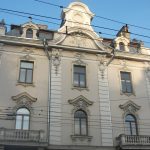
Beside the main house (close to the Antakalnio St.) stands a residential house, in which the first exhibition of Lithuanian art took place in 1907A monument to the brothers Vileišis in Vilnius near the River NerisThe main Vileišis building was one of the first in Vilnius, for whose construction a rare material in Lithuania - concrete - was used. The main house was built in 1904-1906 by the Lithuanian businessman and public figure Petras Vileišis according to a design by engineer August Klein All photos are copyrighted by Vladislav B. Sotirovic© Vladislav B. Sotirovic 2018
Continue ReadingLithuania – Geographical Center of Europe
The Russian Street in Vilnius
The Adam Mickiewicz Museum
St. John Steet in Vilnius
Church of St. Stephen
Church of St. Archangel Raphael
Jewish Quarter (I)
Martynas Mažvydas National Library of Lithuania (Inside)
Monument to Lithuanian Grand Duke Gediminas
The Bastion of the Vilnius Defensive Wall (III)
Russian Orthodox Church of the Blessed Mother of God
Dominican Church of the Holy Spirit (Interior)
Church of Our Lord Jesus and the Trinitarian Monastery
The Bastion of the Vilnius Defensive Wall (II)
Sapieha Estate and Park
The Church of the Holy Trinity and Trinapolis in Vilnius
Church of St. Jacob and Philip (2)
The Building in Vilnius Street No. 25
Church of St. Anne
Vileišis Estate



